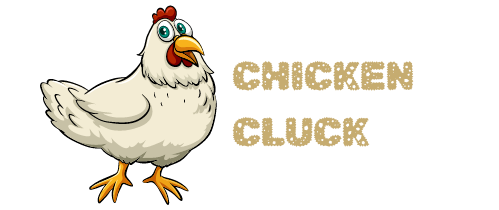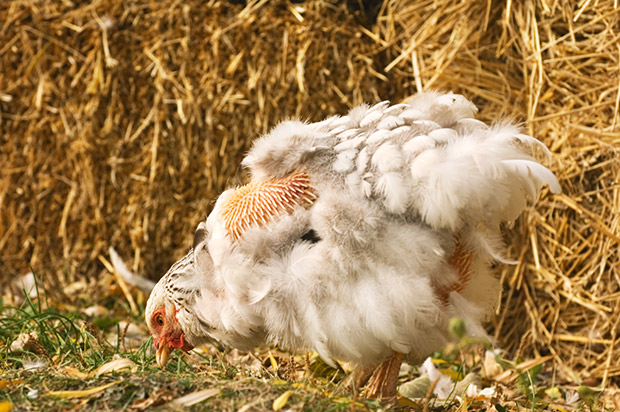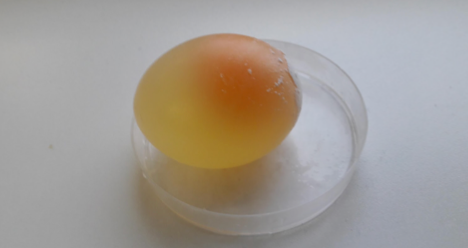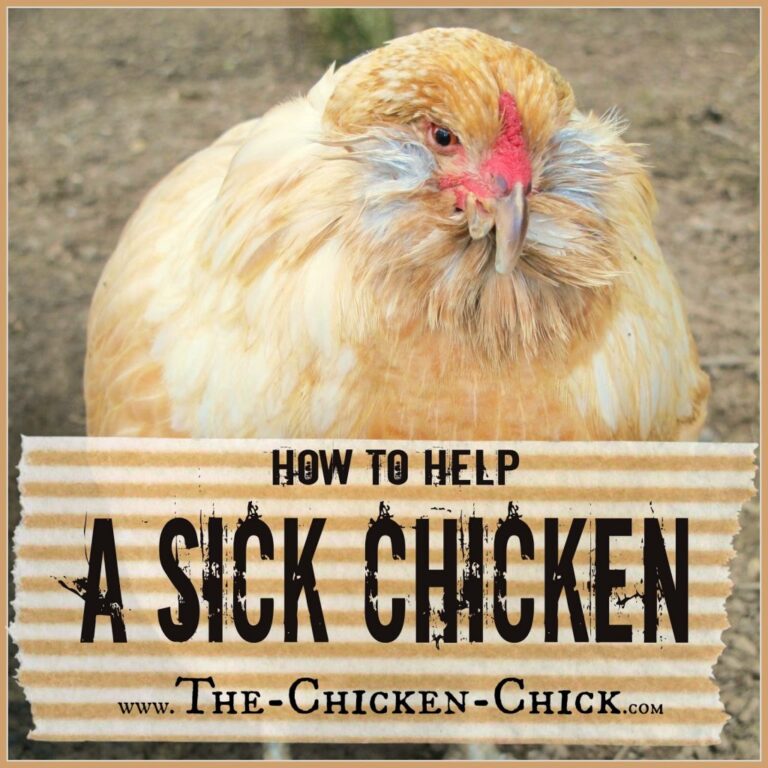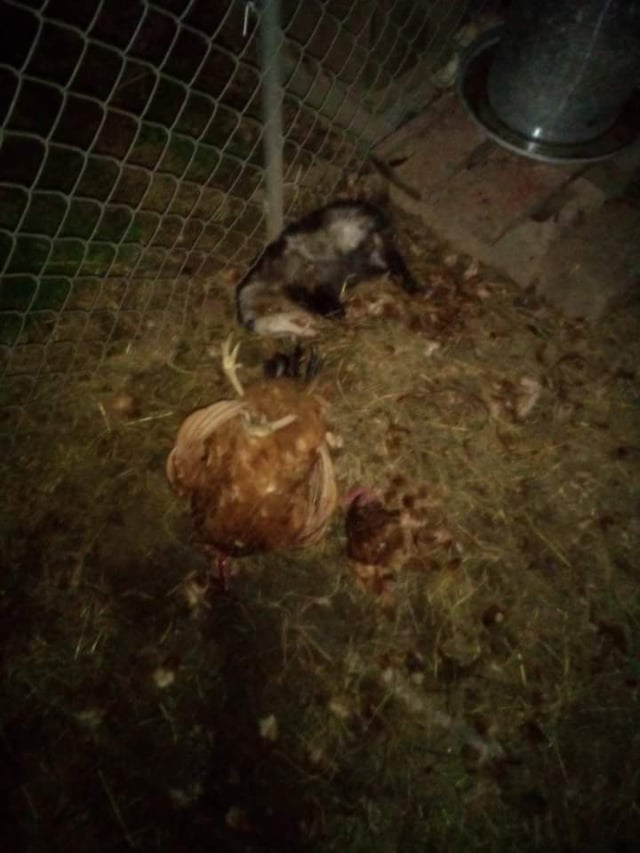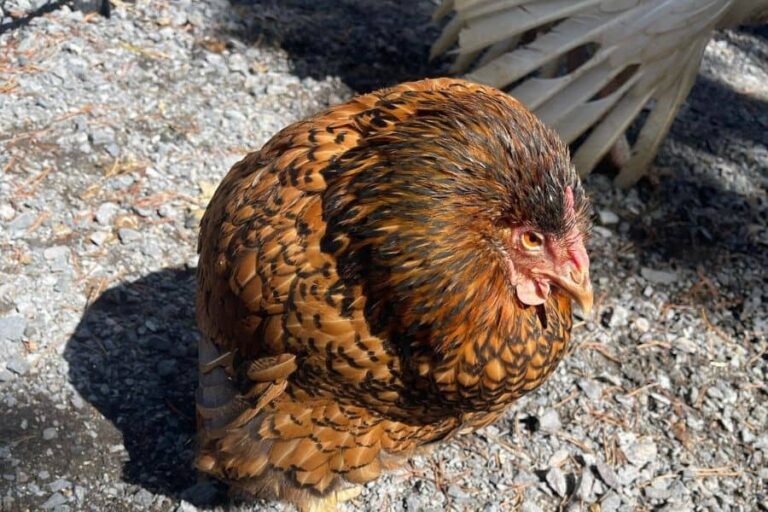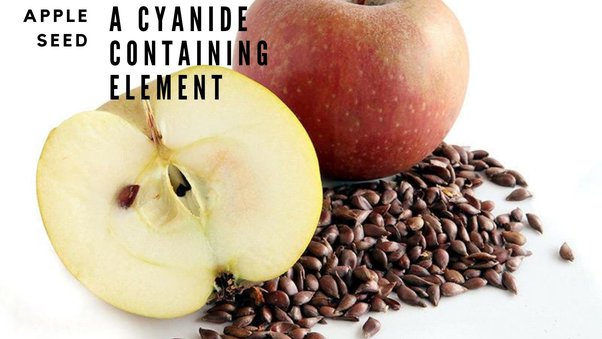Your hen may be losing feathers due to molting, stress, or parasites. Common causes include natural shedding cycles and pecking order conflicts.
Hens often experience feather loss, a concern for many backyard poultry keepers. Feather loss can strike due to several reasons, ranging from the benign to the more concerning. Each year, hens go through molting, a natural replenishment process where old feathers are replaced with new ones.
This process can make your coop look a bit ruffled, but it’s perfectly normal. Stress, environment changes, or nutritional deficiencies can also cause feather loss. Pests like mites or lice might be to blame, leading to discomfort and plucking. Lastly, social dynamics within the flock can lead to pecking and subsequent feather loss. Understanding the cause is crucial for ensuring the health and happiness of your hens. Regular observation and proper care can help keep your flock’s feathers intact and their spirits high.
Unraveling The Mystery Of Feather Loss In Hens
Feather loss in hens is a puzzle that perplexes many backyard poultry enthusiasts. Is it a natural process, or a sign of underlying health issues? This section dives deep into the world of hens losing feathers, providing insight into this common concern.
Identifying Normal Molting Patterns
Understanding molting is crucial in distinguishing between healthy feather loss and potential health problems. Hens naturally shed their feathers to make way for new growth, typically occurring annually.
- Molt usually starts from the head, proceeds along the back, and ends at the tail.
- Feathers may become dull before they shed.
- Young hens may experience their first molt at around 18 months.
New feathers, called pin feathers, emerge soon after the old feathers fall out.
Assessing Feather Loss As A Health Indicator
While molting is normal, excessive feather loss warrants attention. Here’s how to assess if feather loss is a health concern:
| Symptom | Potential Cause |
|---|---|
| Bare patches | Parasites or pecking |
| Feather loss with redness or irritation | Skin infections |
| Feather loss on the head or neck | Lice or mite infestation |
Preventive health measures include regular checks and maintaining a clean coop to minimize risks.
The Molting Process Explained
Finding feathers scattered around your chicken coop can be startling. But often, this is a natural part of a hen’s life cycle known as molting. Let’s dive into what molting is and why your feathery friend may be looking a little bare.
Stages Of Molting In Poultry
Molting is the process where birds replace old feathers with new ones. This happens in several stages:
- Shedding Phase: Old feathers fall out.
- Pin Feather Stage: New feathers start to grow.
- Regrowth Stage: Feathers develop fully for flight and insulation.
Typically, molting starts on the head, works down the body, and ends at the tail. This ensures the bird isn’t completely bare at any time.
Distinguishing Molting From Other Issues
While molting is normal, other issues can cause feather loss, too. Look for these signs to differentiate molting from problems like parasites or illness:
- Symmetrical Feather Loss: Molting usually occurs in a pattern.
- Seasonal Timing: Molting often happens in late summer or fall.
- Bird Behavior: Molting hens typically remain healthy and active.
If feather loss is random or accompanied by skin changes, consult a vet. Healthy molting should not affect the skin’s appearance.
Common Culprits: Parasites And Pests
If you’ve noticed your hen losing feathers, don’t panic yet! Very often, the feather loss in poultry links back to common enemies: parasites and pests. These critters can make life uncomfortable for your feathered friends. Understanding which parasites to look out for is key in keeping your hens happy and healthy.
Combatting Mite And Louse Infestations
Mites and lice are tiny but mighty pests causing huge discomfort for hens. They feed on your hen’s blood and can cause feather loss, irritation, and even anemia in severe cases. Spotting these pests early is crucial. Look for tiny crawlers on your hen’s skin or in their feathers.
A regular check-up routine is essential. Examine your hen at night when these parasites are most active. If you find any, immediate treatment is needed. You can use:
- Diatomaceous earth: Sprinkle it around the coop, on bedding, and on the hens.
- Poultry dusts: These include permethrin, which is effective against pests.
Consult with a vet for the best treatment options.
Preventative Measures For Parasite Control
Prevention is always better than cure. To stop parasites from making a home on your hens, follow these steps:
| Preventative Action | Benefit |
|---|---|
| Regular Cleaning | Reduces parasites in the environment |
| Dust Baths | Allows hens to self-treat for pests |
| Coop Maintenance | Keeps habitat inhospitable for pests |
Ensure proper coop ventilation and sanitation. Provide a dust bath area with sand and ash so hens can maintain their plumage. Check for cracks and crevices and seal them to keep pests out.
Regular flock inspection and environmental management play a huge role in parasite control. Commit to these steps to maintain a healthy, pest-free environment for your hens.

Credit: www.grit.com
Nutritional Deficiencies And Feather Loss
Feathers are essential for chickens, providing warmth, protection, and flight. Feather loss in hens can often signal nutritional imbalances. Understanding the dietary requirements of your chickens is the first step to restoring their beautiful plumage.
Role Of Protein And Vitamins In Plumage
Protein is vital for feather development. Feathers are primarily made of protein, particularly keratin. A protein-deficient diet can lead to poor feather growth and increased moulting. Vitamins like Biotin, Vitamin D3, and E are also crucial. These vitamins support feather strength and growth. Ensuring your hen’s diet is rich in these nutrients is key for healthy feathers.
- Keratin: A protein building block for feathers.
- Biotin: Helps in keratin production.
- Vitamin D3: Promotes calcium absorption, affecting feather structure.
- Vitamin E: Protects skin and aids in feather formation.
Adjusting Dietary Needs To Support Feather Regrowth
Feather regrowth demands a boost in specific nutrients. A balanced diet encourages new feather growth. High-protein feed and supplements like poultry multivitamins can make a difference.
| Nutrient | Function | Food Sources |
|---|---|---|
| Protein | Feather growth | Mealworms, soybeans |
| Biotin | Keratin production | Eggs, liver |
| Vitamin D3 | Calcium metabolism | Fish oil, sunlight |
| Vitamin E | Skin and feather health | Green leafy vegetables |
Finally, ensuring your chickens have constant access to fresh water aids in nutrient absorption. This step is crucial for optimal health and feather maintenance.
The Stress Factor In Feather Picking
Seeing your hen lose feathers can be quite concerning. Feather picking is not just about appearances. It hints at underlying issues. Stress plays a role in this unusual behavior. Let’s explore why your feathered friend might be stressed and how you can help.
Understanding Behavioral Feather Picking
Behavioral feather picking is a common sign of discomfort. Hens may pick their own feathers or those of their flock mates. Let’s examine the root causes of this behavior:
- Overcrowding can cause tension and conflict.
- Lack of enrichment leads to boredom and frustration.
- Pecking order disputes result in aggression.
- Poor nutrition can lead to compulsive self-pecking.
- Diseases or parasites may provoke feather picking as a response to irritation.
Creating A Stress-free Environment For Hens
Reducing stress in your hen’s environment is key to curb feather picking. Follow these steps:
- Provide ample space for each hen to reduce overcrowding.
- Introduce perches and hideouts for privacy and peace.
- Offer varied diet and fresh water to promote health.
- Maintain cleanliness to prevent pests and disease.
- Incorporate toys and foraging opportunities to keep hens engaged.
Create a haven for your hens. A happy hen boasts a full, beautiful plumage.
Disease-related Feather Loss In Hens
Unexpected feather loss in hens often rings alarm bells for dedicated poultry keepers. While molting or natural shedding might seem a likely cause, disease-related issues can often be the culprit. Understanding these medical causes is crucial for maintaining a healthy flock.
Recognizing Symptoms Of Illness Linked To Feather Loss
Symptoms indicating illness usually accompany feather loss in hens. Keepers must stay vigilant for any unusual behaviors or changes. Look for:
- Red patches on skin
- Lethargy or reduced activity
- Changes in appetite or drinking
- Unusual droppings or diarrhea
- Bare spots or feather stubble
Key Diseases That Lead To Shedding Feathers
Certain diseases are notorious for causing feather loss in hens. Recognizing these can help in prompt and effective treatment.
| Disease | Signs & Symptoms | Feather Loss Areas |
|---|---|---|
| Fowl Pox | Scabs, lethargy, decreased laying | Head, neck, and wattles |
| Marek’s Disease | Paralysis, weight loss, tumours | Random patches all over the body |
| Avian Lice & Mites | Itching, restlessness, skin irritation | Vent area, under the wings |
Understanding these diseases ensures poultry keepers can seek veterinary assistance early. Early detection and treatment are vital for a hen’s recovery.
Addressing Pecking Order And Bullying
Addressing Pecking Order and Bullying within the flock is crucial for the well-being of your hens. Chickens establish a social hierarchy known as the “pecking order,” which can sometimes lead to increased stress and feather loss among weaker or lower-ranking chickens due to bullying. Recognizing the signs of this behavior is the first step in ensuring a peaceful and healthy environment for your feathered friends.
Navigating Social Structure In The Coop
Understanding the coop’s social dynamics helps prevent feather loss. Strong hens may peck at weaker ones to show dominance. This tension can cause fear and feather plucking in submissive birds. To maintain harmony:
- Monitor interactions closely.
- Identify birds that show aggressive behavior.
- Offer multiple feeding stations to avoid competition.
- Create separate areas for hens to retreat and destress.
Mitigating Aggression To Prevent Feather Loss
Reducing aggression is key to stopping feather loss. Use these tips to ensure a calmer coop:
| Strategy | Effect |
|---|---|
| Enhance coop space | Lowers stress, gives birds room to move |
| Add perches and hiding spots | Reduces conflicts, provides safe zones |
| Distract with toys/enrichment | Focuses energy away from pecking |
| Separate bullies temporarily | Calms flock, teaches bullies a lesson |
Remember to keep the living space clean and stress-free. Offer dust baths and treat dispensers to engage your hens positively. Consistent routines and gentle handling also reduce aggression. With care and attention, your coop can be a tranquil environment for all your chickens.
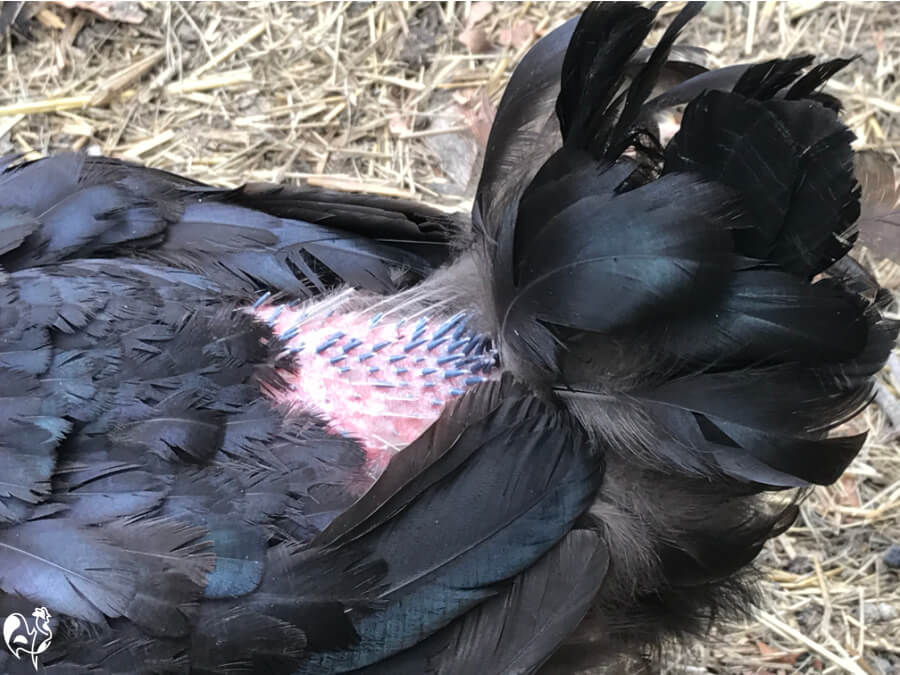
Credit: www.raising-happy-chickens.com
Expert Tips For Restoring A Hen’s Feathers
Finding that your hen is losing feathers can be alarming. Feather loss in chickens can stem from a variety of causes such as parasites, malnutrition, or stress. Fortunately, with expert insight, you can help your hen regain her full plumage. Let’s explore proven methods to foster regrowth and keep your flock thriving.
Best Practices For Fostering Feather Regrowth
To encourage feather regrowth, consider the following best practices:
- Provide proper nutrition: Ensure your hen’s diet includes a balance of proteins, vitamins, and minerals.
- Supplement with protein: During molting, a diet high in protein, such as mealworms or a molting feed, is essential for feather growth.
- Promote a stress-free environment: Minimize disturbances and provide a comfortable, quiet space for your hens.
- Parasite control: Regularly treat your flock for mites and lice to prevent feather loss.
- Clean housing: Maintain a clean coop with fresh bedding to reduce feather-pecking and provide a hygienic space.
When To Consult A Veterinarian For Feather Loss
To ensure the health of your hen, visit a vet:
- When you notice significant feather loss not related to normal molting.
- If there are signs of skin irritation, wounds, or other abnormalities.
- Should aggressive pecking or bullying from other birds be observed.
- When home remedies don’t improve your hen’s condition.
- If you suspect an underlying illness may be the cause.
Regular check-ups can catch problems early. Your vet can offer precise treatments tailored to your hen’s needs.

Credit: happymoneysaver.com
Conclusion
Understanding why your hen is losing feathers is crucial to her health and wellbeing. Various causes, from molting to parasitic issues, can be responsible. It’s vital to observe your hen closely and consult with a vet if needed. Feather loss need not be a distressing affair with proper care and attention.
Keep your flock flourishing by staying informed and proactive.
